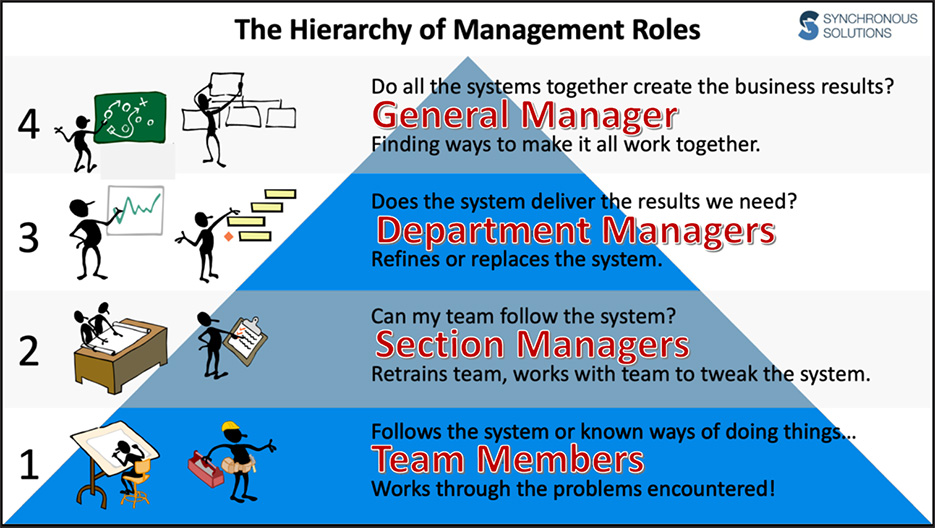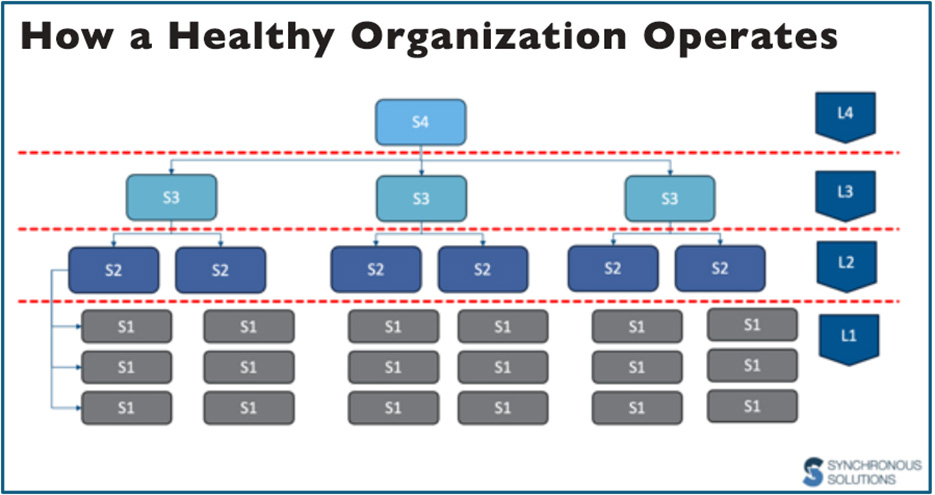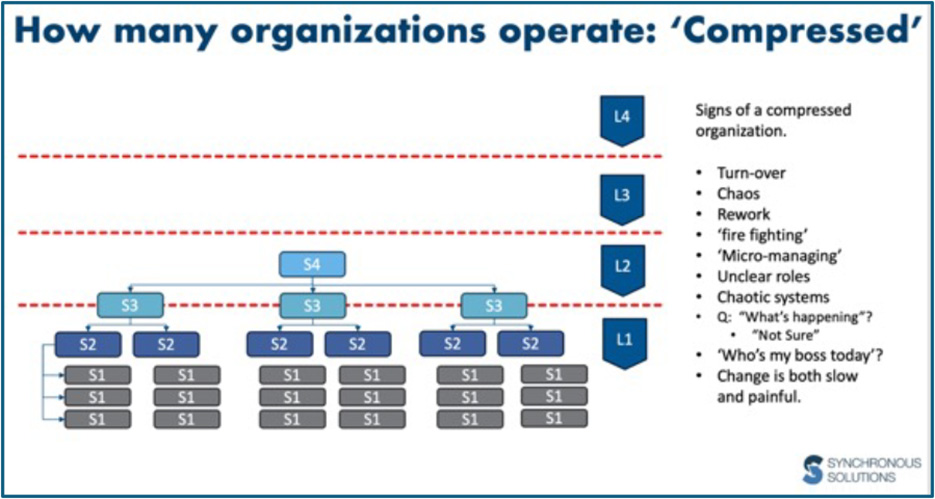How Do You Identify Who Will Be a Good Manager?
Rick Phelps
Synchronous Solutions
As your stone shop grows, your team grows with it. More people doing more work will eventually require you to add ‘managers’ to the business, and that should get you to wonder ‘What exactly does it mean to be a manager, and how would I know a good one if I tripped over them?’
If you don’t have the time to find out what makes a great manager, you will just be giving someone the title and hoping they figure it out!
As the business continues to grow, one day you will realize there are so many managers hanging around that you better put in place a manager to manage the managers. So, you do.
And sooner or later, you realize you have a mess on your hands. There are lots of managers, but you really aren’t sure what they are ‘managing.’ Your profitability is tanking, and chaos seems to reign. Turns out, they (the managers) didn’t ‘figure it out.’ How could they?
This would be a good time to get yourself educated on what ‘management’ and ‘leadership’ are all about.
Businesses run on systems, and people run those systems.
You MANAGE the systems.
You LEAD the people.
These statements should give you a big clue to what went wrong. Ponder them.
If your managers are not working on your business’ systems, they are not ‘managing.’ And the chances are really high that they are NOT working on your business’ systems.
There is a hierarchy of management work directly tied to your business systems. For those of you who like to dig deeper, read Systems Leadership by Ian Macdonald, which builds on the research and writings of Elliot Jaques, but is a whole lot easier to read and understand!
Most stone shops will only ever need three layers of management: a General Manager, some Department Managers, and Section Managers. Really large shops with multiple locations will have a fourth layer of management, the CEO. The number of people at each layer of your business forms a pyramid like the one below.

At the base of the pyramid are your Team Members, the people who do the work that makes the money. These are the people running your business systems, and they are the key to your success.
Management exists to help your Team Members be as successful as possible, and each layer of management plays a different role in insuring that success.
The first layer of management, the Section Managers, oversee a small ‘section’ of the business process and are responsible for making sure the systems being used by their team make sense, are followed, and are tweaked and improved as new and better ways to get things done are identified by the team.
These roles are critical if your business systems are to persist through time. Without a manager doing this work, the system will fall into disuse, and everyone will eventually do their work their own way.
The second layer of management, the Department Manager, looks at the collection of systems their department uses to insure they are delivering the results required by the business. For example, the Production Manager is accountable for the capacity of the business’ chosen Constraint. Do the maintenance systems deliver the required machine availability? Do the operating systems deliver the required machine effectiveness? Are the upstream and downstream production processes doing their part to maximize the ability of the Constraint to produce?
When the department systems are NOT delivering what is needed, it is the Department Manager’s accountability to refine, design, or buy new systems that CAN deliver the required results. When this role isn’t doing this work, the Team Members will do ‘the best they can with what they have,’ and that is rarely good enough in the long run.
The third layer of management is the General Manager (GM). The GM is where all the different systems of the departments come together to deliver the Value the business wishes to create. What do I mean by ‘Value?’ The first and most obvious Value is the Return on Investment (ROI) of the business, a second Value would be ‘Customer Value’ – the delighting of the customer so they return to do more business with you. There are others.
The role of the GM is critical to any business that runs our Synchronous Flow System. The example above for a department manager describes how the Production Manager is accountable for the capacity of the business to produce countertops.
At the same time, the Marketing & Sales Manager is accountable for keeping the pipeline and the plant full of the right work. These two departments need to be aligned, and that happens at the GM role. The other departments’ systems (HR, Finance, etc.) also need to align to optimize the creation of business Value.

When each layer of management is doing the work of their role, the organization chart looks and acts like Chart One (above). The reality of most businesses is Chart Two (the chart below). In these organizations, the work being done by managers doesn’t match their true role. Each of the layers of management are engaged in the base work of the business, usually through firefighting and micromanaging.

If you can relate to Chart Two, get some help to understand where and how your organization is broken, and how to rectify it.
With this as context, let’s discuss what it takes to be a great manager, and how you can identify the best candidates for management positions in your company.
Finding the Managers in Your Shop
First, please understand that basing a capability assessment on education, age, and experience can lead you astray. A degree in management indicates an interest in the management profession and an awareness of management systems but does not guarantee capability. Basing your assessment on age is largely about seniority and confuses value of the role with the value of loyalty. Experience is only helpful if we are judging applicable experiences. Experience doing a task and experience managing a task being done are different experiences.
Managers Manage Systems
They also must create, redesign, modify, improve, discard, replace, and integrate systems. To do any of this they have to recognize the value of systems.
The complexity of systems work increases substantially between each layer of management, and capability at one layer does not imply capability for the next. As the complexity of work goes up, the number of people capable of doing that kind of systems work goes down – significantly.
So how do you identify potential managers? Look at how they solve problems. If they are “really good at their job” but never try to create better ways (systems) for making it easier or more consistent, they are not manager material.
If you need to pay them more and that is the reason you want to promote them, don’t, just pay them what they are worth. Team members can be more valuable and contribute more to the business than their manager. If that is true, pay them appropriately.
Department managers need to be able to create systems and imagine, design, and conceive of them in their head. This is not a capability everyone possesses. Look carefully and make sure you are putting people in charge of your departments who can do this type of work. If you are looking outside of your business, when interviewing, ask about the systems and processes they have designed in their previous work experiences. If they look at you funny, don’t hire them. If they understand what you are asking, they will tell you all about their systems, what they did, why they were needed, what they accomplished, as they are probably thrilled that they are talking with someone who recognizes their value. Hire them if they have the people skills to go with their systems thinking!
Many companies are so busy that they don’t have the time, even if they have the talent, to develop their own systems. This is why companies like ours exist. We can help you implement a comprehensive business system that is proven to work in this industry. We can also train, coach, and mentor your managers to develop the knowledge and skills they need to be great managers AND great leaders.
– Rick Phelps
Synchronous Solutions
“We help clients control the flow of information and materials through their system to increase profitability, decrease process times, and reduce chaos.” Contact us at www.synchronousolutions.com .